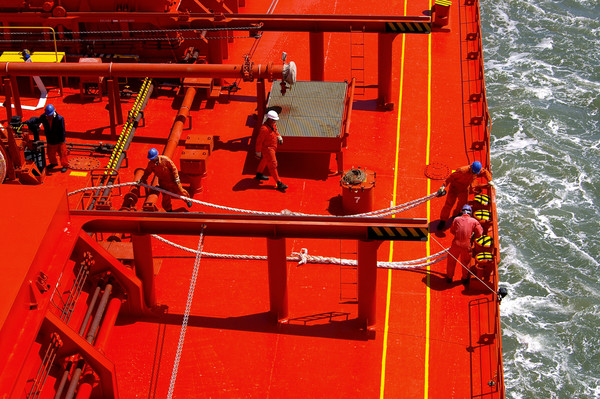The term ‘SIRE’, whilst unfamiliar to some, is common vernacular for those that work in or around the tanker shipping industry. SIRE – or to give it its full name the Ship Inspection Report Programme – is a tanker inspection and reporting programme created and managed by OCIMF (Oil Companies International Marine Forum) to encourage high safety standards in tanker shipping.
For charterers, SIRE provides assurance that the vessels moving their cargo meet certain standards. For owners and seafarers, it is about receiving good reports (vetting acceptance) from the inspectors that come onboard to carry out inspections. In my experience when working onboard ship, SIRE often meant a competition, especially between vessels owned by the same company, about who would achieve the best inspection report.
Whilst SIRE may bring different benefits to different sectors within the industry, we can all agree that the increasingly high standards seen in tanker shipping over the past 30 years are certainly due to the success of the programme.
OCIMF introduced SIRE to industry in 1993 in response to concerns from charterers about sub-standard shipping within the tanker fleet. It created the onboard inspection programme for crude and chemical tankers and gas carriers. Whilst there have been many iterations of the SIRE programme over the years to bring it in line with changing regulations and evolving technology, its main objective has always been to improve standards in tanker shipping.
To understand why SIRE is so effective we must consider how it works.
Most charterers require the vessels they charter to have a ‘vetting acceptance’ – an assurance that the vessel that will be carrying their cargo is maintained and operated to accepted standards.
To achieve this an OCIMF-approved inspector will board a vessel during discharging operations. Once onboard, the inspector will complete a Vessel Internal Questionnaire (VIQ). This questionnaire checks if the ship and crew are complying with international standards and regulations. Inspectors mark the questionnaire according to what they see onboard and how crew answer the questions. At the end of the inspection, if the inspector is satisfied that the vessel meets the necessary standards, the tanker will be given a ‘vessel acceptance’.
The inspector shares their findings with the ship’s crew and operator. The same information is also put into a database that can be accessed by charterers, terminal operators and government bodies concerned with ship safety.
Inspections should be carried out at least every six months.
OCIMF has also rolled out inspection programmes for offshore vessels (OVID) and barges (BIRE), which has substantially improved safety standards in these industries.
The International Maritime Organization (IMO) also implemented Port State Control (PSC). This is the inspection of foreign ships in national ports to verify that the condition of the ship and its equipment comply with the requirements of international regulations and that the ship is manned and operated in compliance with these rules.
For all other ocean-going vessel types a similar inspection programme is carried out by PSC in national ports across the globe. In each port, foreign vessels may be selected to be vetted by an inspector appointed by the national government to check the vessel complies with international regulations.
Despite these inspection programmes and national governments’ ability to detain vessels that do not comply with international regulations, it is not uncommon during my SIRE inspections to see piping in poor condition, a deck with significant amounts of rust, and low safety culture on board.
There are many examples, discovering oil in a bulk cargo of rice due to the inadequate maintenance of the bunker venting pipe, or ballast water in the bottom of a hold due to an overflowing ballast tank. I could give many more.
The maritime industry has always been at the forefront of technical advances and improving safety. Let us hope that in the coming years, systems, equivalent to the SIRE, will be in place on other types of vessels.
